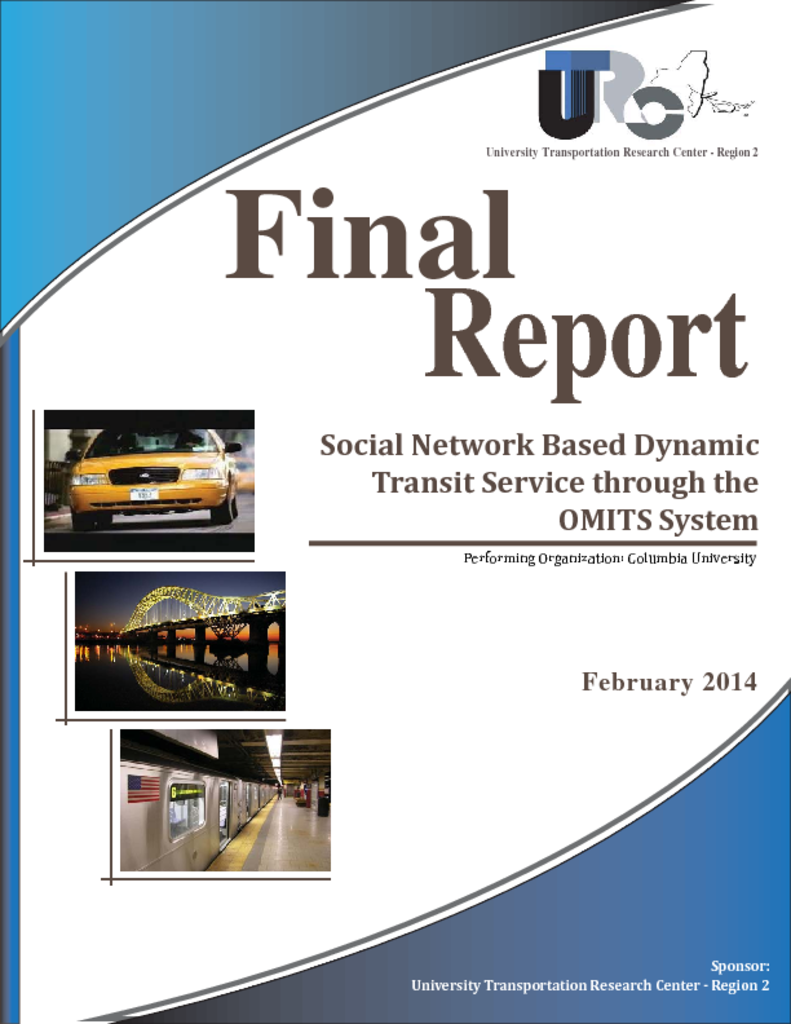The Open Mode Integrated Transportation System (OMITS) forms a sustainable information infrastructure for communication within and between the mobile/Internet network, the roadway network, and the users’ social network. It manipulates the speed gap between different types of the network: information communication through cellular phones and the Internet is tremendously higher than that of vehicles on roadway, which is much faster than that of the social networking. Using agent based modeling and simulation (ABMS), the time and spatial limits of traditional transportation system can be overcome by appropriately integrating new information communication technologies into transportation services.
This project extends OMITS to social network based applications for dynamic transit service, which uses emerging information and communication technologies, including smart phones, Internet services, GPS/GIS, and database, to optimize the transportation system for improved riders’ experience and traffic mitigation. With the aid of the social network based OMITS App, the vehicles serve as probes for the real-time speed of the roadway network. The operation of this system essentially relies on effective information communication, accurate prediction of traffic conditions, and comprehensive understanding of transit customer behavior and traffic flow dynamics. The OMITS App, running on an iPhone or Android smart phone, communicates among the OMITS server, riders, and drivers, detecting roadway traffic conditions and providing driving directions. Using traffic prediction model based on the historic and real-time traffic data, the system provides the optimal routing direction and recommend ridesharing group.
In addition, the recent theoretical research on traffic accident detection, which is a fundamental component of ABMS, has been introduced. The new method focuses on the special tendencies at the downstream and upstream traffic flow in a traffic incident. The improved GIS spatial autocorrelation algorithm is introduced into the new traffic incident detection method. As a case study, the OMITS system has been proposed to serve the Columbia University community through the campus bus system. CU-OMITS is designed for Columbia University Bus Line – Medical Center to Fort Lee. It includes the services of reservation, bus real-time supervision and bus security management. The Vehicle Information Service Assistant (VISA) emerges as an indispensable requisite to provide real-time data services between the server and the vehicle. CU-OMITS forms an intelligent, safe and reliable school bus service management platform.




